 02-04-2017, 04:30 PM
02-04-2017, 04:30 PM
|
#31 (permalink)
|
|
Master EcoModder
Join Date: Aug 2012
Location: northwest of normal
Posts: 29,435
Thanks: 8,377
Thanked 9,131 Times in 7,539 Posts
|
ChazInMT — I applaude your summarization. Even though my spell-checker rejects both those words. 
aerohead — It's like the Cavalry coming over the hill.
aeroguy — Compare aerohead's description of legacy CFD against OpenVDB. It's currently being rolled into Blender. Blender's animation engine will enable open source Computational Fluid Dynamics.
Don't be too smug, you missed 1956 and the birth of rock and roll. 
|
|
|

|
 Today Today
|
|
|
|
 Other popular topics in this forum...
Other popular topics in this forum...
|
|
|
|
 02-05-2017, 07:33 AM
02-05-2017, 07:33 AM
|
#32 (permalink)
|
|
Master EcoModder
Join Date: Jul 2011
Location: Ann Arbor, Michigan
Posts: 4,215
Thanks: 145
Thanked 2,827 Times in 1,983 Posts
|
I agree with what everyone else has been saying about reducing Cd and lift if you can. I'm offering this example for reference because it is so iconic and well tested.
Sourced base image below because I could not find the one out of a book Aerohead scanned into his forum gallery which shows a template overlay.
https://en.wheelsage.org/porsche/911...ctures/o3rqv5/
Then I overlaid the one of the forum's AeroTemplates from here ( not sure which page):
http://ecomodder.com/forum/showthrea...ion-21952.html
The combination:
Aerodynamics by George Kachadoorian | Photobucket
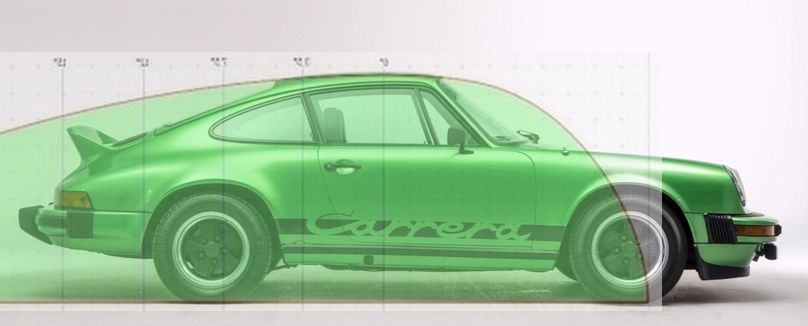
This overlay was done to provide some context for the chart quoted below, which shows a lowering of Cd and lowering of lift with ducktail.
Spoilers: front and or rear - Page 2 - Pelican Parts Technical BBS
Quote:
Originally Posted by Bill Verburg

|
Going back to one of my first comments about getting the rear spoiler to fill out the template, it looks as the Porsche 911 RS kept it just below that line for some reason unknown to myself.
Maybe your testing can examine what happens when you fill that gap in your comparative Honda Civic project. At what point does the Cd stop being lowered and starts going back up.
If your 3D printer does not allow for curved or wavy top edge of rear spoiler, then try a square notched or comb filter pattern, something like a bread knife edge.
The point would be to see if there is less drag when the vortex coming off the Gurney flap is broken down to smaller elements and is less planar or a constant cylinder of rolling air mass.
836 Gurney flaps - Aerodynamics - Civil Engineering Handbook

Quote:
Gurney first started fitting these 'spoilers' pointing upwards at the end of the rear deck of his Indy 500 cars in the late 1960s in order to enhance the generation of the downforce....................
The principle of the Gurney flap was probably exploited in aeronautics almost by accident many years before its invention. Similar strips had been in use for many years, but were intended to reduce control-surface oscillations caused by patterns of flow separation changing unpredictably. It is also likely that the split and Zap flaps, shown in Fig. 8.8b and c, that date back to the early 1930s, produced similar flow fields to the Gurney flap. Nevertheless, it is certainly fair to claim that the Gurney flap is unique as the only aerodynamic innovation made in automobile engineering that has been transferred to aeronautical engineering.
|
Concept of wavy spoiler: Distribution of energy verses concentration of energy, which may help control oscillations.
If one "feathers" the edges as found in nature ( bird feathers, whale fin tubercles) just to see what happens, there might be a nice surprise - or not.
Be brave, take a chance. Have no regrets because each failure is just another step in learning, and learning is a life long path - or at least it should be.  EDIT:
EDIT: One more chart.
http://forums.pelicanparts.com/porsc...ront-rear.html

The 3.3 turbo tail is different than the spoiler type Ducktail, it extends out and is sometimes called a Teatray or Whaletail.
Similar to the below shown on a later model.
http://forums.pelicanparts.com/porsc...ront-rear.html

I should note that there is less drag and less lift with the type shown on the red car (tray/wing) verses the earlier green car (duck).
If you go to Bonneville you are more likely to see rear mounted horizontal extensions than near vertical ones for the same reasons. Each one attempts to fill out the Aero-template in it's own way.
__________________
George
Architect, Artist and Designer of Objects
2012 Infiniti G37X Coupe
1977 Porsche 911s Targa
1998 Chevy S-10 Pick-Up truck
1989 Scat II HP Hovercraft
You cannot sell aerodynamics in a can............
Last edited by kach22i; 02-05-2017 at 07:58 AM..
|
|
|

|
|
The Following 2 Users Say Thank You to kach22i For This Useful Post:
|
|
 02-05-2017, 11:06 AM
02-05-2017, 11:06 AM
|
#33 (permalink)
|
|
Master EcoModder
Join Date: Sep 2012
Location: Victoria, BC
Posts: 1,747
Thanks: 75
Thanked 577 Times in 426 Posts
|

Why is it that automakers of sleek/fast cars appear to make the top half of the car conform to the same curve as the template? (were the template only half the height of the car)
Especially if it isn't actually optimal? |
|
|

|
 02-05-2017, 01:35 PM
02-05-2017, 01:35 PM
|
#34 (permalink)
|
|
Master EcoModder
Join Date: Jul 2011
Location: Ann Arbor, Michigan
Posts: 4,215
Thanks: 145
Thanked 2,827 Times in 1,983 Posts
|
Quote:
Originally Posted by Stubby79


Why is it that automakers of sleek/fast cars appear to make the top half of the car conform to the same curve as the template? (were the template only half the height of the car)
Especially if it isn't actually optimal? |
I think your are talking about what I did a few years ago. However I was calling it "scaling the template down in size to fit the canopy".
It was explained to me this does not work because of the ground pressure wave consideration. In other words the template is sized for the height (high point), and that's that.
Now if you are looking at really low exotic cars, I have yet to see one lower than the template would allow for.
Either way, such a question is best poised with a graphic for clarification. Otherwise we can only guess at what you really mean.
The posts I'm thinking of are in the Aero-Template thread (a sticky thread), but also see Neil's post #58 in link below.
http://ecomodder.com/forum/showthrea...t-20793-6.html
__________________
George
Architect, Artist and Designer of Objects
2012 Infiniti G37X Coupe
1977 Porsche 911s Targa
1998 Chevy S-10 Pick-Up truck
1989 Scat II HP Hovercraft
You cannot sell aerodynamics in a can............
|
|
|

|
 02-05-2017, 02:17 PM
02-05-2017, 02:17 PM
|
#35 (permalink)
|
|
Master EcoModder
Join Date: Feb 2010
Location: Elmira, NY
Posts: 1,795
Thanks: 320
Thanked 362 Times in 301 Posts
|
Would a leaf blower producing 250 mph have enough volume for a wind tunnel?
|
|
|

|
 02-05-2017, 02:18 PM
02-05-2017, 02:18 PM
|
#36 (permalink)
|
|
Master EcoModder
Join Date: Sep 2012
Location: Victoria, BC
Posts: 1,747
Thanks: 75
Thanked 577 Times in 426 Posts
|
Quote:
Originally Posted by kach22i

I think your are talking about what I did a few years ago. However I was calling it "scaling the template down in size to fit the canopy".
It was explained to me this does not work because of the ground pressure wave consideration. In other words the template is sized for the height (high point), and that's that.
Now if you are looking at really low exotic cars, I have yet to see one lower than the template would allow for.
Either way, such a question is best poised with a graphic for clarification. Otherwise we can only guess at what you really mean.
The posts I'm thinking of are in the Aero-Template thread (a sticky thread), but also see Neil's post #58 in link below.
http://ecomodder.com/forum/showthrea...t-20793-6.html |
Your "scaling it down to fit the canopy" bit was exactly what I was talking about, where you had the template superimposed over the canopy only. I saw a reply or two that said it wouldn't work but didn't really explain why.
Post #58 that you pointed out explains it a bit better. Didn't see that one. #72 was the reply I read. Maybe the terminology went over my head.
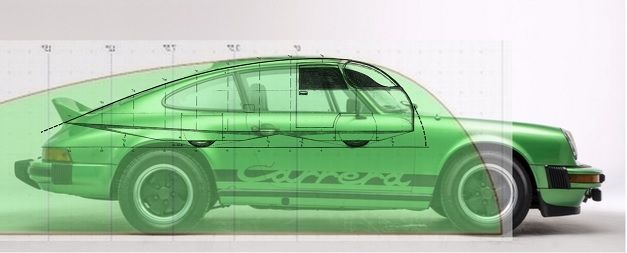
Is it just a coincidence that it scales almost perfectly? Or were they mistaken in the same way I am? Perhaps it's the shape the air takes as the front of the car pushes it up and over the whole vehicle that counts?
The glass/cockpit on a fighter jet also looks like a scaled-down version to me...

I would think a specific angle would prevent separation, regardless of the scale of said object. And/or said angle might get smaller and smaller the faster said object is designed to go, so it would get "stretched" out more and more to prevent separation.
That's probably a lot more to this than seems obvious to someone uneducated about it, such as myself.
|
|
|

|
 02-05-2017, 03:59 PM
02-05-2017, 03:59 PM
|
#37 (permalink)
|
|
Aero Deshi
Join Date: Jan 2010
Location: Vero Beach, FL
Posts: 1,065
Thanks: 430
Thanked 669 Times in 358 Posts
|
Quote:
Originally Posted by Stubby79

That's probably a lot more to this than seems obvious to someone uneducated about it, such as myself.
|
The basic purpose of the low aerodynamic drag game is to make air move the least amount possible.
Remember the air is still, not moving, you are moving through it. Anytime we make the air move it requires energy, the more we move it/energize it, the more energy it takes to do it. We can all agree on that?
I think the main point people miss is that as you push through the air, there is an ideal shape to make it as easy as possible for the air to get out of the way, and then return to a calm state as soon as possible. That is fairly easy to understand right?
What the (Thee) Template ©® represents? It is a shape that for a given size vehicle, it will move the least amount of air if the uppermost point on the template is scaled to be at the uppermost part of the vehicle, and the base of the template is at the bottom of the wheels.
The reason it does not scale, is because a vehicle of a given height is going to have to move the air up and out of the way in order to pass under it, as the air moves along the top back of the car, it will be energized the least and return to being still air again the soonest if the shape of the vehicle follows the curve of the rear of the template.
If the car shape is steeper in back, then the air will drop faster to return to calm, and by going faster will have more energy, thus more drag. If the shape is shallower, the air will have a longer opportunity to become entrained in the air being dragged along by the skin of the car, and be made to move more again, thus use more energy....which we see as drag.
If you just use the scaled Template ©® on design elements and called the vehicle optimized, then the top shape would be as aerodynamic as the bottom shape here.....
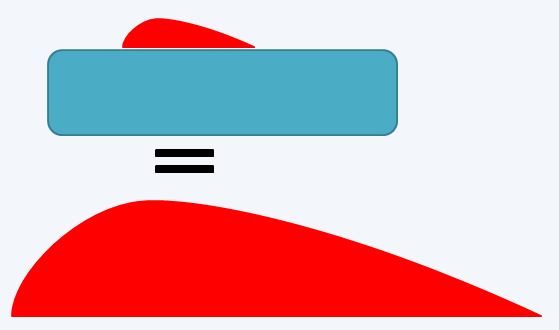
Annnnnd I don't think anyone is going to say that is true. Am I right?
But we can all agree that the top shape is better that the bottom here.....
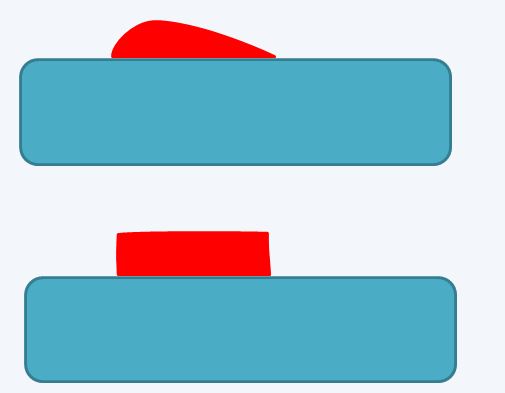
So yes, the template can help optimize elements....but, that's NOT what it is intended to be used for. You could use a 9 iron to putt with, or play tennis with a baseball, or use a crescent wrench to pound nails, but, you'd be doing it wrong.
Thank You...Please drive through.
|
|
|

|
|
The Following 2 Users Say Thank You to ChazInMT For This Useful Post:
|
|
 02-05-2017, 08:56 PM
02-05-2017, 08:56 PM
|
#38 (permalink)
|
|
Master EcoModder
Join Date: Jul 2011
Location: Ann Arbor, Michigan
Posts: 4,215
Thanks: 145
Thanked 2,827 Times in 1,983 Posts
|
Nice graphics Chaz, what program?
To answer Stubby's question, when I looked into this it included aircraft canopies and what I called equipment blisters.
Aerohead then posted information on these conditions for me/us. I dont know the specific thread but you can do a seach in the fourm to find it.
The shape was almost template matching, but stretched out in the front, not as blubous.
I recall doing a speed boat example if that helps.
EDIT: I looked up some old threads which explored the canopy and speed boat topics.
Canopy drag
http://ecomodder.com/forum/showthrea...rag-28206.html
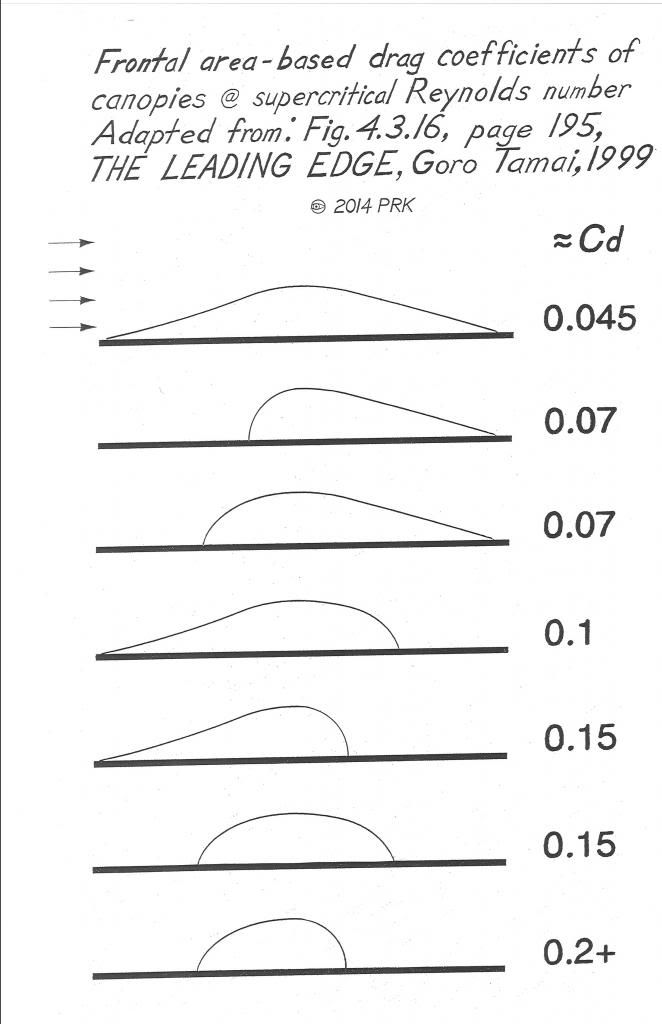
And in another forum I posted a lot of related ground plane graphics, it's a boat forum so I was hoping for a different perspective there - I guess.
Teardrop Ratios - above deck
http://www.boatdesign.net/forums/hyd...eck-47575.html

This was a good example of "outside perspective" from that boat thread:
http://www.boatdesign.net/forums/hyd...k-47575-2.html
Quote:
Originally Posted by DCockey

The surface of the water a boat is traveling through has a similar effect on the flow of air around the boat as the effect the ground/road surface has on the air flow around a car.
But it is not because of an "air pressure wave".
Let's start with the air flow around a car. If the car is somehow moving thought the air a considerable height above the ground then the air can flow in all directions around the car. But if the car is on the ground then the air cannot flow through the ground so the air flow is affected. Close to the ground the flow will be close to tangent to the ground. This will affect the air flow around the car. More air will have to flow around the sides of the car and over the top of the car.
Now consider a boat moving through the water. The surface of the water will have waves and not be flat like the ground. The size and shape of the waves will depend on the speed, size and shape of the boat. (The water surface may also have waves due to ambient conditions.) The air cannot flow through the water. Close to the water the flow will be tangent to the surface of the water. This will affect the air flow around the boat similar to the effect the ground has on the air flow around a car.
|
I think when we first look into these topics we assume what applies to aircraft also applies to cars, boats and maybe even hovercraft. However there are some differences regarding the affects of the ground plane or water plane.
Huge topic, I don't think one can do wrong getting started on any one of them, just don't mix and match expecting similar results/outcomes.
__________________
George
Architect, Artist and Designer of Objects
2012 Infiniti G37X Coupe
1977 Porsche 911s Targa
1998 Chevy S-10 Pick-Up truck
1989 Scat II HP Hovercraft
You cannot sell aerodynamics in a can............
Last edited by kach22i; 02-06-2017 at 09:06 AM..
|
|
|

|
 02-05-2017, 10:20 PM
02-05-2017, 10:20 PM
|
#39 (permalink)
|
|
Aero Deshi
Join Date: Jan 2010
Location: Vero Beach, FL
Posts: 1,065
Thanks: 430
Thanked 669 Times in 358 Posts
|
I've gotten comfortable using the "Draw" program in MS Word. It lets me do basic stuff, then I "Snipping Tool" what's on the screen to make it a .jpg. It's nice to be able to illustrate what I'm trying to convey to hopefully make it easier to figure out what I'm trying to say.
|
|
|

|
|
The Following User Says Thank You to ChazInMT For This Useful Post:
|
|
 02-06-2017, 12:11 AM
02-06-2017, 12:11 AM
|
#40 (permalink)
|
|
Master EcoModder
Join Date: Aug 2012
Location: northwest of normal
Posts: 29,435
Thanks: 8,377
Thanked 9,131 Times in 7,539 Posts
|
Quote:
|
Originally Posted by Stubby79
Is it just a coincidence that it scales almost perfectly?
|
Yes.
Well... that and tradition. It's called a 'bubble-top coupe'. Examples (look 'em up yoseff) include the 64 1/2 Mustang, the Mercedes Benz 300SL coupe and my personal favorite — the 1961 Chevy Bel Air (and it corresponding Oldsmobile equivalent) 2-door hardtop.
As for the coincidence part, it falls apart in the front/rear view. For an example I'll point to the 1998 Plymouth Pronto Spyder
 http://www.carstyling.ru/en/car/1998_plymouth_pronto_spyder/
http://www.carstyling.ru/en/car/1998_plymouth_pronto_spyder/
What they found is it's hard to get side-by-side seating and a low windshield header. This is pushed about as far as it can go. Porsche Speedster-ish.
Now I will go back to waiting for OP to talk about wind tunnels.
Grant-53 — Big blower, little tunnel? It would need a diffuser section. That could be a bundle of soda straws. Or paper towel cores.
Last edited by freebeard; 02-06-2017 at 12:20 AM..
|
|
|

|
|